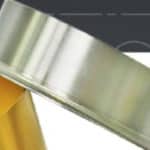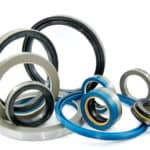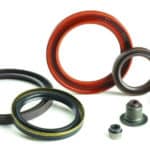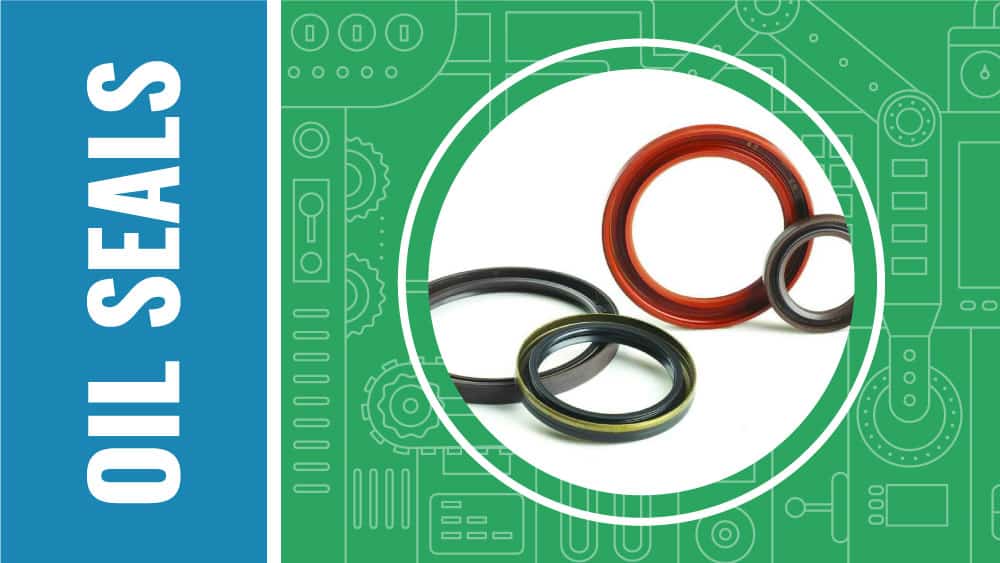
Summary
- Oil seals comprise three core components – the sealing element (or lip), the metal case, and the optional garter spring, each contributing to the seal’s functionality and effectiveness.
- Choosing an oil seal involves evaluating multiple factors, including design, application needs, shaft diameter, bore diameter, sealing material, and environmental considerations.
- Regular maintenance, including proper lubrication, routine inspections, and scheduled replacements, ensures the longevity and reliability of oil seals, enhancing overall machine efficiency.
Introduction
In the mechanical world, where machinery and equipment make the earth move and gears rotate, the oil seal is an important component. Oil seals, or shaft seals, are a crucial part of various industrial equipment and applications, ensuring that lubricants don’t escape and contaminants don’t enter. While they may seem simple, their construction, design, and application are anything but. This in-depth guide aims to help you understand the essential role of oil seals, their construction, the various designs available, and key factors to consider when selecting one for your application.
Purpose of an Oil Seal
An oil seal serves three crucial purposes within any machinery. First, it prevents the leakage of lubricants or fluids outside the seal, even under high pressure. This function ensures the effective operation of equipment, as sufficient lubrication is a key requirement for the smooth functioning of machinery. Second, it retains the lubricating oil within the machinery. This retention function reduces the need for constant maintenance or re-lubrication, saving time and resources. Third, the oil seal acts as a barrier against contaminants. It prevents dirt, dust, and other potential contaminants from entering the machinery, protecting sensitive parts from damage or wear.
Construction of an Oil Seal
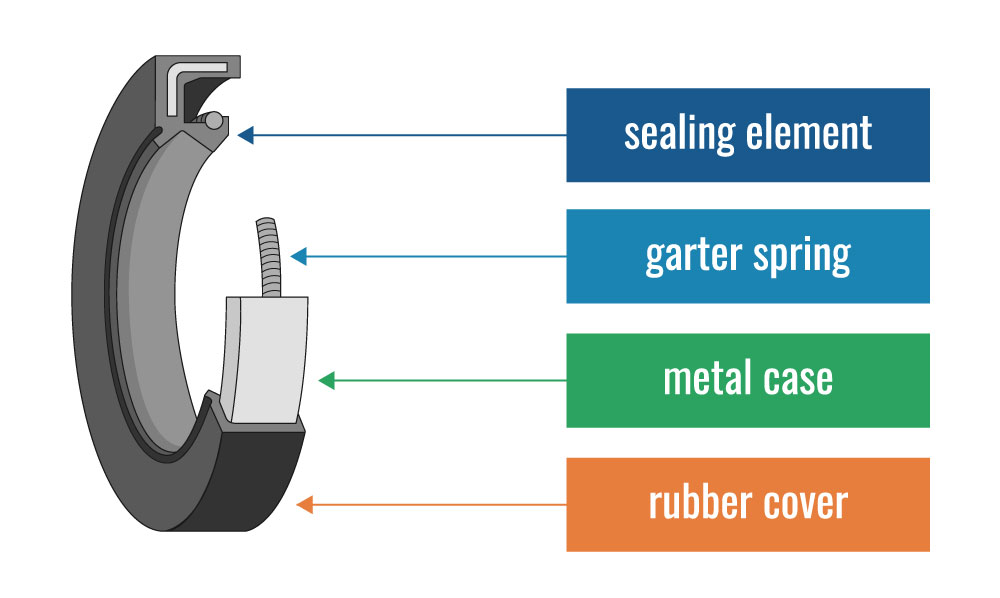
The construction of an oil seal is a testament to meticulous engineering. Each oil seal primarily comprises two core components: the sealing element and the metal case. The collaboration of these parts brings about the seal’s functionality and effectiveness. A garter spring may also be included as an available feature, providing an extra layer of operational support.
Sealing Element
The sealing element, also known as the sealing lip, forms the interior of the oil seal. Various materials can make up the lip depending on the application’s specific needs. Below are some commonly used materials:
- Nitrile Rubber (NBR): This is the most frequently used material for sealing elements, boasting good heat resistance properties and resistance to salt solutions, oils, hydraulic oils, and gasoline. Its recommended operating temperature range is from -40 to 248°F (-40 to 120°C). Nitrile functions adequately in a dry environment but only for intermittent periods.
- Polyacrylate Rubber (PA): PA is a go-to material for high surface speed environments as it has better heat resistance than nitrile. It performs optimally within a temperature range of -4 to 302°F (-20 to 150°C). It is incompatible with water or temperatures below -4°F (20°C).
- Silicone Rubber (SI): A popular choice for its resistance to low and high temperatures (-58 to 356°F, or -50 to 180°C). Silicone rubber has high lubricant absorbency, which reduces friction and wear, making it ideal for crankshaft seals. However, it is unsuitable for oxidized or hypnoid oils due to its poor resistance to hydrolysis.
- Fluorocarbon Rubber (FKM): Also known as Viton®, this material offers excellent resistance to chemicals and performance at high temperatures. It’s highly esteemed for its exceptional durability and heat resistance.
Metal Case
The metal case serves as the oil seal’s exterior or frame, providing rigidity and strength to the seal. The case material selection depends on the environment in which the seal will operate. Often, the same rubber material used in the seal element covers the case to help seal the exterior of the oil seal in the housing bore.
- Carbon Steel: The most common material for oil seal cases, suitable for use with standard lubricants.
- Stainless Steel: Ideal for water, chemicals, or corrosion resistance applications. Stainless steel cases are also suitable for many FDA applications.
Oil seals with outer metal cases may include finishes or treatments applied to the outer edge to aid in rust protection, identification, and sealing of scratches or imperfections in the housing bore. Common finishes applied to the outside edge of metal O.D. oil seals include plain (a bonding agent of usually a yellowish-green color), a color-painted edge, and a grinded-polished edge.
Garter Spring
When included, the garter spring applies pressure to the sealing lip against the shaft, ensuring a tight seal. The choice of material, like that of the case, largely depends on the environment of use.
Garter springs are generally used when the lubricant is oil, as it provides the necessary downward force to maintain a tight seal. However, when grease is the lubricant, garter springs can often be eliminated. Due to its low viscosity, grease doesn’t require as much downward force to maintain an effective seal.
Standard Sealing Lip Designs
Oil seals come with various lip designs, each serving a unique purpose and suitable for different applications. Let’s discuss the most common industry-standard lip designs:
- Single Lip: This design features a garter spring and primarily seals against internal media in low-pressure applications. It’s not ideal for environments with dirt or contaminants.
- Double Lip: Like the single lip design, this design uses a garter spring with a primary lip that seals against internal media in low-pressure applications. The secondary (or auxiliary) lip offers extra protection from dust and dirt.
- Dual or Twin Lip: This design features two identical primary lips and a garter spring, typically used to separate two liquids. Lubricating the space between the lips with a grease or similar substance is essential for this lip design.
- Single Lip, No Spring: This lip design, which does not include a spring, is mainly used for sealing a non-pressure medium, such as grease, or protecting against dirt.
- Double Lip, No Spring: This design is also springless and is generally used to seal non-pressure media like grease. It protects against both internal and external media.
Standard Sealing Case Designs
Beyond the variety of lip designs, oil seals also come in various case designs, each serving a unique role. Here are some of the most common ones:
- Type A: An outer metal case with a reinforced plate for structural rigidity. It’s ideal for shafts when the diameters exceed 150mm, smaller shafts that need extra strength, or when used with special rubber compounds.
- Type B: An outer metal case generally used on shafts with diameters under 150mm and bore housing materials made of steel or cast iron. It provides a firm and accurate seal in the housing but may limit the static sealing on the outer diameter (O.D.).
- Type C: A rubber-covered metal case that can be useful on any size shaft. The rubber prevents rust & corrosion and shields against damage during assembly. This design is suitable for soft alloy, plastic housing materials, or replacement in environments with minor damage to the housing surface.
Factors in Oil Seal Selection
Selecting the right oil seal involves comprehensively evaluating your application’s needs and conditions. Below are the key factors to consider when choosing an oil seal:
- Type: The combination of lip design and case type you select will determine the overall design of the oil seal.
- Shaft Diameter: The outside diameter of the shaft where the seal will operate (sometimes referred to as the I.D. of the oil seal)
- Bore Diameter: The inside diameter of the bore housing where the seal will operate (sometimes referred to as the O.D. of the oil seal)
- Width: The thickness or width of the oil seal is another critical dimension that impacts the fit and functionality of the oil seal.
- Sealing Material: The material used in the seal lip should be resistant to the operating temperature range, chemicals, lubricants, and pressures in your application.
- Environmental Factors: Consider external factors such as exposure to dirt, water, and other contaminants, temperature fluctuations, chemical exposure, and shaft speed. For example, oil seals that must withstand high-speed rotational motion, high-pressure conditions, or extreme temperatures require more durable and resilient materials.
- Lubrication: The lubrication used in the application will affect the choice of sealing material. The material must be compatible with the lubricant to prevent degradation and ensure the seal’s longevity.
- Spring Material: The choice of garter spring material is also crucial as it must resist environmental factors such as exposure to water, chemicals, etc.
- Application Requirements: The specific requirements of your application are critical to making the right choice. For example, if the seal is for a food processing machine, it must meet FDA standards.
Failure Modes of Oil Seals
It is crucial to understand that oil seals, like any other mechanical component, are subject to failure over time. The key to minimizing downtime and enhancing operational efficiency is recognizing the signs of oil seal failure and understanding its reasons. Here are some common failure modes:
- Excessive Wear: This is often a sign of regular friction between the seal lip and the shaft, usually resulting from inadequate lubrication or a rough shaft surface finish.
- Hardening or Cracking: Exposing oil seals to high temperatures for extended periods may cause the sealing material to harden or crack. This breakdown compromises the seal’s effectiveness and can lead to leakage.
- Chemical Erosion: If the seal material is incompatible with the chemicals or lubricants used in the machinery, it can degrade over time, leading to seal failure.
- Improper Installation: Incorrect oil seal fitting can cause immediate or premature failure. This improper fit can be due to many reasons, such as damage during installation, misalignment, or using the incorrect size.
- Excessive Pressure: Exposing an oil seal to pressure beyond its design parameters can result in seal deformation.
Maintenance and Inspection of Oil Seals

Proper maintenance and regular inspection are vital for prolonging the service life of oil seals and preventing unplanned downtime. Here are some tips:
- Regular Lubrication: Ensuring adequate lubrication will minimize friction and prevent wear and tear on the seal. Use only compatible lubricants as per the seal material to avoid chemical erosion.
- Routine Inspections: Schedule regular inspections of the oil seals to spot any signs of failure, such as leakage, hardening, or visible wear. Catching issues early can prevent minor problems from escalating into significant failures.
- Proper Cleaning: Dirt, grime, and debris can damage the sealing surface, leading to leaks. Regular cleaning of the seal and surrounding areas can help prevent this.
- Monitor Operating Conditions: Keep track of pressure levels, temperatures, and shaft speed. Excessive fluctuations can signal something wrong and potentially harm the oil seal.
- Replacement: Even with impeccable maintenance, oil seals won’t last forever. Understanding the typical lifespan of the oil seal type and material used in your machinery will help you plan for timely replacements.
Conclusion
Oil seals are integral components in a range of machinery and equipment, playing a vital role in keeping lubricants in, contaminants out, and machinery operating efficiently. Understanding the design, materials, and selection factors of oil seals can help you make an informed choice regarding your industrial needs. The reliability, longevity, and efficiency the right oil seal can bring to your machinery is priceless.
Global O-Ring and Seal offers over 50,000 unique oil seals with 215,000 cross-referenced part numbers for OEMs and Manufacturers. To find a part you need, search for the OEM/Manufacturer part number alone, and the oil seal matching the part number will be displayed. If you don’t have a part number, visit our online store and use the filter options to find the oil seal you are interested in. If you are unsure which oil seal is right for your application, please contact us and speak with a sales representative to discuss your best options.

 English
English  Español
Español  Français
Français  Português
Português  Deutsch
Deutsch  Italiano
Italiano  Русский
Русский  中文
中文  日本語
日本語  العربية
العربية  हिन्दी
हिन्दी 